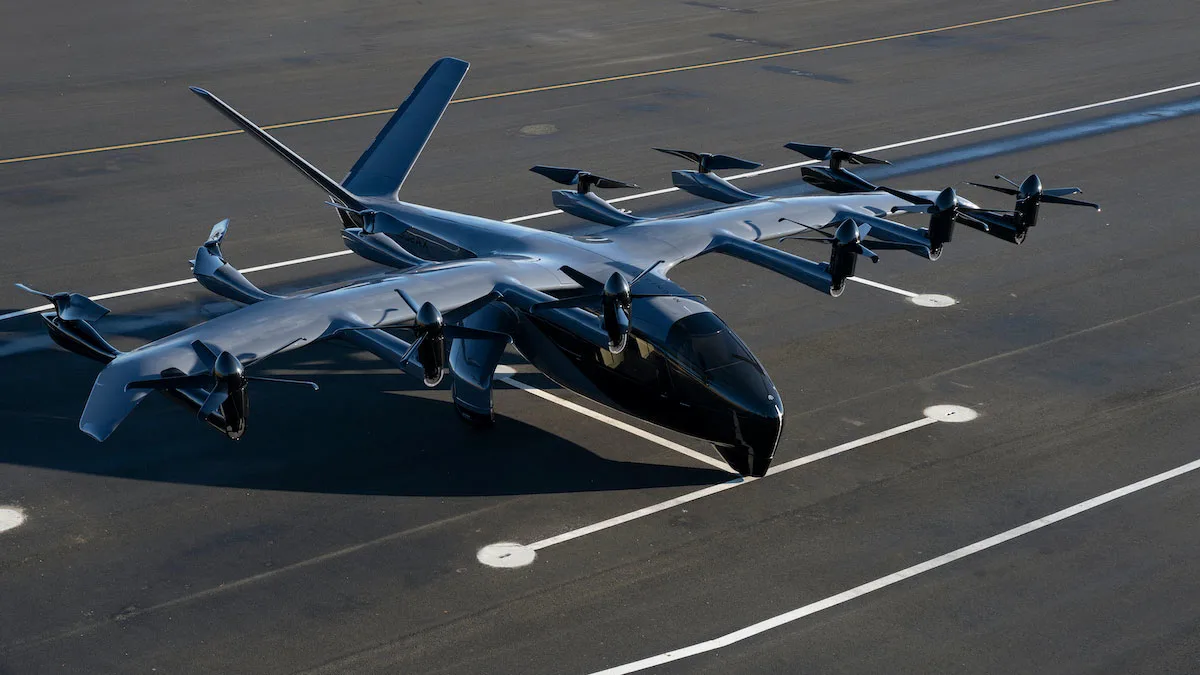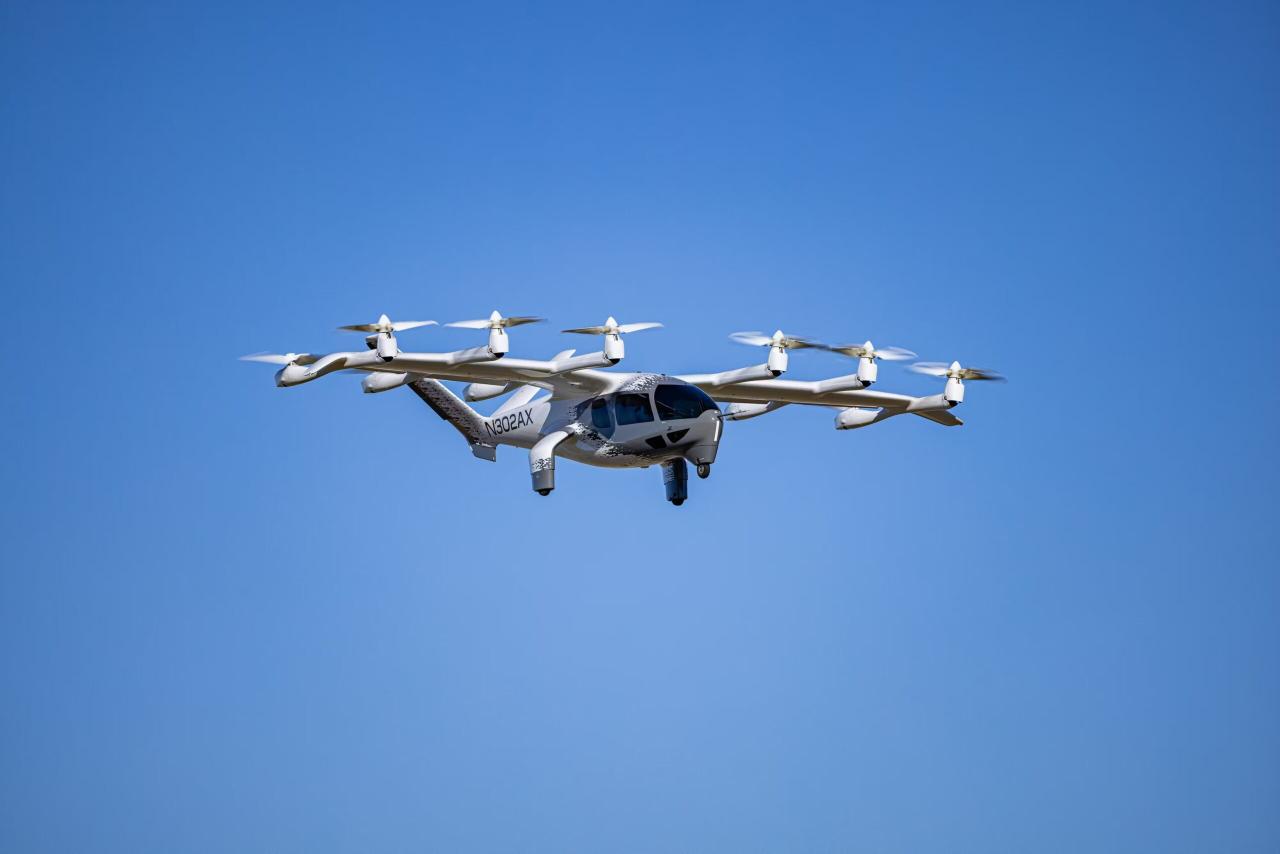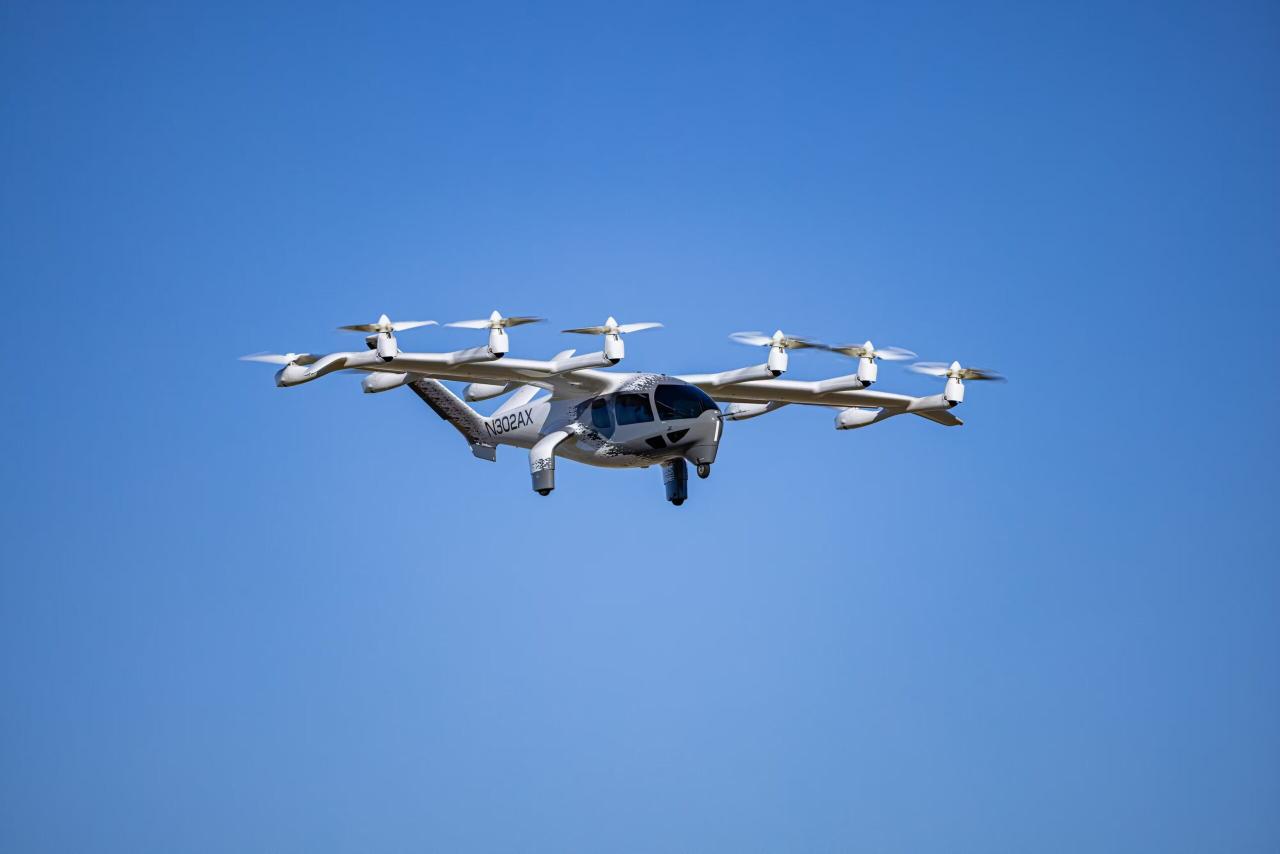Archer Aviation is revolutionizing air travel with its innovative electric vertical takeoff and landing (eVTOL) aircraft. The company’s ambitious vision aims to redefine urban air mobility, offering a sustainable and efficient alternative to traditional transportation methods. This exploration delves into Archer Aviation’s history, technology, market position, and future projections, providing a comprehensive overview of this groundbreaking enterprise.
Archer Aviation, a prominent player in the advanced air mobility sector, is constantly exploring innovative solutions for efficient cargo transport. Their research often involves analyzing various payload strategies, including examining the data on effective drone load configurations like those detailed in this insightful report on remington drone loads. Understanding these load dynamics is crucial for Archer Aviation to optimize their own aircraft designs and operational efficiency.
From its founding to its current position as a leader in eVTOL development, Archer Aviation has consistently pushed the boundaries of aerospace innovation. This report examines the company’s technological advancements, manufacturing processes, and market strategies, while also analyzing the financial performance and regulatory challenges it faces. We’ll explore the potential of Archer’s aircraft across various sectors and assess its long-term prospects within the rapidly evolving urban air mobility landscape.
Archer Aviation Company Overview
Archer Aviation is a relatively young company in the burgeoning eVTOL (electric vertical takeoff and landing) aircraft industry. Founded with the ambitious goal of revolutionizing urban air mobility, Archer has quickly established itself as a significant player, attracting considerable investment and garnering attention for its innovative aircraft design and production plans.
Archer Aviation’s History and Mission
Archer Aviation was established to develop and commercialize electric aircraft for urban air mobility. Its mission is to provide safe, sustainable, and efficient air transportation solutions. The company’s evolution has been marked by significant milestones, including securing substantial funding, forging key partnerships, and achieving critical design and development progress on its flagship eVTOL aircraft.
Archer Aviation’s Market Position and Competition
Archer Aviation operates in a competitive landscape with several other companies vying for a share of the emerging eVTOL market. Key competitors include Joby Aviation, Lilium, and Vertical Aerospace, each with its own technological approach and market strategy. Archer aims to differentiate itself through its focus on a specific niche within the urban air mobility sector and its efficient manufacturing processes.
The company’s current market position is characterized by a strong emphasis on securing pre-orders and partnerships to build a robust customer base and production pipeline.
Archer Aviation’s Technological Advancements
Archer Aviation’s technological advancements center around its eVTOL aircraft design, which incorporates innovative solutions in propulsion, battery technology, and flight control systems. The company is leveraging advancements in electric motor technology and battery energy density to achieve extended flight ranges and improved performance. Continuous refinement of its design and manufacturing processes ensures a balance between performance, safety, and cost-effectiveness.
Archer’s Aircraft Technology
Archer’s eVTOL aircraft is designed for short-haul, urban air mobility operations. Key features are pivotal to its performance and market viability. A comparison with competitors’ technology highlights its unique aspects and challenges.
Key Features and Specifications of Archer’s eVTOL Aircraft

Archer’s eVTOL aircraft boasts a sleek, efficient design optimized for urban environments. Specific details regarding its dimensions, payload capacity, and range are subject to change as development continues, but the design emphasizes quiet operation and ease of maintenance.
Comparison with Competitor Technologies
Compared to competitors like Joby Aviation’s aircraft, which utilizes a different propulsion system, Archer’s design may offer advantages in certain areas, such as ease of manufacturing or maintenance. However, other competitors might excel in different aspects, such as speed or range. Direct comparisons require detailed specifications from all involved parties, which are often subject to non-disclosure agreements.
Archer Aviation, a prominent player in the advanced air mobility sector, faces numerous challenges as it develops its electric vertical takeoff and landing (eVTOL) aircraft. The recent incident involving a nj drone shot down highlights the complexities of airspace management and the safety concerns surrounding unmanned aerial vehicles, issues which are directly relevant to Archer’s future operations and regulatory approvals.
These regulatory hurdles are a key factor Archer must navigate for successful market entry.
Technological Challenges in Aircraft Development
Archer faces significant technological hurdles, including the need for further advancements in battery technology to increase flight range and reduce weight. Ensuring the safety and reliability of the aircraft’s autonomous flight systems is another critical challenge. Certification and regulatory compliance also pose substantial technical and logistical obstacles.
Key Performance Indicators (KPIs) of Archer’s Aircraft
| KPI | Metric | Target | Status |
|---|---|---|---|
| Range | Miles | 60+ | Under development |
| Speed | mph | 150+ | Under development |
| Payload | lbs | 400+ | Under development |
| Flight Time | Minutes | 30+ | Under development |
Manufacturing and Production
Archer Aviation’s manufacturing strategy is crucial for achieving its ambitious production goals. Scalability and efficient processes are key to success in this rapidly growing market.
Manufacturing Processes and Supply Chain
Archer Aviation’s manufacturing process is designed for efficiency and scalability. The company is leveraging advanced manufacturing techniques and collaborating with key suppliers to ensure a reliable and cost-effective supply chain. This includes establishing partnerships with established aerospace manufacturers to leverage their expertise and production capacity.
Scalability of Production Capabilities
Archer is actively working to establish scalable manufacturing capabilities to meet anticipated demand. This involves investing in advanced manufacturing facilities and developing efficient production processes to ensure that it can ramp up production as the market for eVTOL aircraft grows. Their strategy involves a phased approach, starting with smaller-scale production and gradually increasing capacity as demand and technological readiness mature.
Materials Used in Aircraft Construction
The construction of Archer’s eVTOL aircraft utilizes a range of advanced materials chosen for their lightweight yet high-strength properties. These materials are selected to optimize the aircraft’s performance, durability, and overall weight, which directly impacts flight range and efficiency. Specific materials used are often kept confidential for competitive reasons.
Key Stages of Archer’s Aircraft Production

- Design and prototyping
- Component manufacturing
- Assembly
- Testing and certification
- Delivery
Market Analysis and Target Customers
Understanding the target market and potential applications of Archer’s aircraft is essential for evaluating its commercial prospects. Analyzing market size and growth opportunities is crucial for strategic planning.
Primary Target Customer Segments
Archer Aviation’s primary target customer segments include air taxi operators, urban air mobility service providers, and potentially cargo companies. Their initial focus appears to be on providing air taxi services in densely populated urban areas, where traditional transportation methods are often congested and inefficient. The longer-term vision may involve expansion into cargo delivery and other niche applications.
Potential Market Size and Growth Opportunities
The market for urban air mobility is projected to experience significant growth in the coming years. Several market research firms predict substantial growth, driven by increasing urbanization, technological advancements, and government support for sustainable transportation solutions. However, these projections vary widely depending on the assumptions made regarding technological progress, regulatory approvals, and consumer adoption rates.
Potential Applications Across Various Sectors
Beyond air taxi services, Archer’s aircraft could find applications in various sectors, including emergency medical services (EMS), cargo delivery, and potentially even tourism. The versatility of the design allows for potential adaptation to meet the needs of different customer segments. However, each application would require specific modifications and certifications to meet the unique operational requirements of the respective sector.
Potential Market Reach of Archer’s Technology, Archer aviation
Imagine a future where air travel is as commonplace and accessible as ride-sharing services are today. Archer’s technology has the potential to transform urban landscapes, reducing traffic congestion and providing a faster, more efficient mode of transportation. The potential market reach extends to major metropolitan areas worldwide, where the demand for efficient urban transportation is high and the benefits of eVTOL technology are most pronounced.
This would require extensive infrastructure development, including vertiports and robust air traffic management systems, to support widespread adoption.
Financial Performance and Investment
Archer Aviation’s financial performance and investment strategy are critical indicators of its long-term viability and success. Understanding its funding sources and partnerships is key to assessing its financial health and growth potential.
Overview of Financial Performance and Key Metrics
Archer Aviation’s financial performance is characterized by significant investments and funding rounds, indicating investor confidence in its technology and business model. Key financial metrics, such as revenue, profitability, and cash flow, are typically disclosed in the company’s financial reports and public filings. However, as a relatively young company, Archer is likely still in a growth phase and may not yet be profitable.
Funding Sources and Investment Strategies

Archer Aviation has secured funding through a combination of private investments, strategic partnerships, and potentially government grants. Its investment strategy focuses on securing capital to fund research and development, manufacturing, and expansion into new markets. The company’s financial health is largely dependent on its ability to attract further investment and successfully commercialize its technology.
Partnerships and Collaborations
Archer Aviation has formed strategic partnerships with various companies across the aerospace, manufacturing, and technology sectors. These partnerships provide access to essential resources, expertise, and production capabilities, contributing to the company’s overall success. These collaborations are crucial for streamlining the development process, accelerating time to market, and mitigating risks associated with developing and commercializing a novel technology.
Potential Risks and Challenges
Archer Aviation faces significant financial risks, including the potential for delays in aircraft development and certification, competition from other eVTOL companies, and challenges in securing sufficient funding to support its growth plans. The company’s financial outlook is highly dependent on its ability to successfully navigate these risks and capitalize on market opportunities.
Regulatory and Legal Landscape
Navigating the regulatory and legal landscape is a critical aspect of Archer Aviation’s business. Meeting safety certifications and complying with regulations are essential for bringing its aircraft to market.
Regulatory Hurdles in Bringing Aircraft to Market
Archer Aviation faces significant regulatory hurdles in bringing its eVTOL aircraft to market. These include obtaining necessary certifications from aviation authorities, complying with airworthiness standards, and addressing safety concerns related to autonomous flight operations. The regulatory landscape is constantly evolving, requiring continuous adaptation and compliance efforts.
Safety Certifications and Approvals
Archer Aviation must obtain various safety certifications and approvals from relevant regulatory bodies before its eVTOL aircraft can be commercially operated. These certifications are crucial for ensuring the safety and reliability of the aircraft and demonstrating compliance with international aviation standards. The certification process is rigorous and time-consuming, requiring extensive testing and validation.
Potential Legal and Regulatory Risks
Archer Aviation faces potential legal and regulatory risks associated with its business model, including liability for accidents, data privacy concerns, and intellectual property disputes. Mitigating these risks requires careful legal planning, risk assessment, and proactive compliance with all applicable laws and regulations.
Key Regulatory Bodies Influencing Archer Aviation’s Operations
- Federal Aviation Administration (FAA)
-United States - European Union Aviation Safety Agency (EASA)
- Other national aviation authorities (depending on the region of operation)
Future Outlook and Projections
Archer Aviation’s future outlook depends on several factors, including technological advancements, market adoption, and regulatory approvals. Predicting its long-term impact requires careful consideration of these factors.
Potential Future Scenarios for Growth and Market Share
Several scenarios are possible for Archer Aviation’s future growth and market share. A successful scenario involves timely aircraft certification, strong market demand, and effective scaling of production capabilities. A less favorable scenario could involve delays in certification, intense competition, or unforeseen technological challenges. Predicting the most likely outcome requires continuous monitoring of market dynamics and technological progress.
Predictions Regarding Long-Term Impact
Archer Aviation’s technology has the potential to significantly impact urban transportation and logistics. Successful commercialization could lead to reduced traffic congestion, faster commute times, and new economic opportunities. However, the long-term impact will depend on factors such as the cost of operation, public acceptance, and the development of supporting infrastructure.
Potential Technological Advancements Affecting Archer’s Future
Future technological advancements in battery technology, autonomous flight systems, and air traffic management could significantly affect Archer Aviation’s future. Advancements in battery technology, for example, could lead to increased flight range and reduced operating costs. Conversely, technological setbacks could hinder progress and delay market entry.
Timeline Detailing Key Milestones in Archer’s Projected Development
A projected timeline would include milestones such as completing aircraft certification, initiating commercial operations, achieving specific production targets, and expanding into new markets. These milestones are subject to change depending on various factors, including technological progress, regulatory approvals, and market demand. A precise timeline is difficult to provide without access to Archer’s internal projections and plans.
Archer Aviation’s journey towards commercializing its eVTOL aircraft represents a significant step forward in sustainable urban air mobility. While challenges remain in terms of regulation, production scalability, and competition, the company’s innovative technology and strategic partnerships position it for potential success. The future of air travel may well be shaped by Archer’s commitment to creating a safer, faster, and more environmentally friendly mode of transportation.
Continued monitoring of its progress and the evolving regulatory environment will be crucial in assessing its long-term impact.
FAQ Explained
What is Archer Aviation’s main competitor?
Archer faces competition from several companies developing eVTOL aircraft, including Joby Aviation and Vertical Aerospace, among others. The competitive landscape is dynamic.
When is Archer expected to begin commercial operations?
Archer’s timeline for commercial operations is subject to regulatory approvals and production milestones. Official announcements should be consulted for the most up-to-date information.
How much funding has Archer Aviation secured?
Archer’s funding details are publicly available through financial reports and news releases. It’s recommended to refer to these sources for the most current information.
What are the key safety features of Archer’s eVTOL?
Archer incorporates various redundant systems and advanced safety technologies in its aircraft design, details of which are often disclosed in company publications and presentations.
